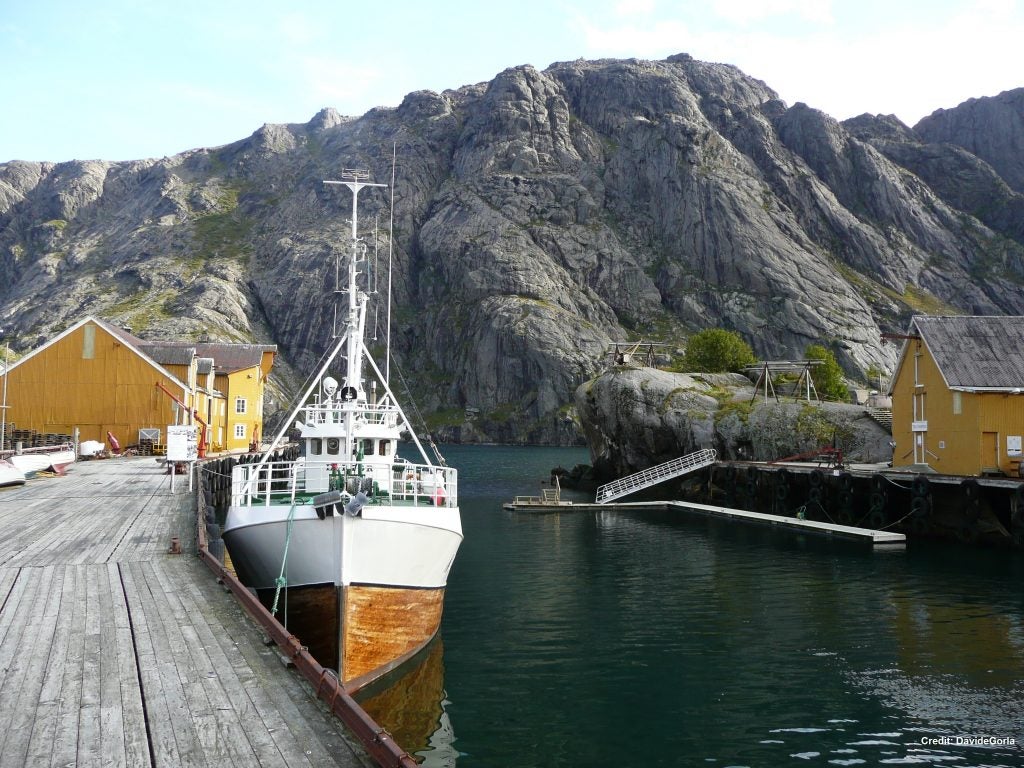How can building and strengthening international institutions help achieve climate resilient fisheries?
Editor’s note: This is the fourth in a multi-part blog series, Fisheries for the Future, examining the impacts from climate change on global fisheries and the opportunities to address these emerging challenges. Throughout the series, we’ll be investigating how climate change will impact the world’s supply and distribution of fish and what we can do to ensure the most sustainable future for ourselves and our planet.
History is written in no small part through the conflicts over shared resources between neighboring countries, as each party tries to maintain its share of the pie. But in the ocean, these issues tend to be exacerbated. One of the key ocean resources is fish, which are out of sight and mobile, swimming long distances to find optimal breeding or feeding grounds. Now, with rapidly warming ocean waters due to climate change, the stakes are even higher as fish shift out of areas where they’ve traditionally been found, often crossing international boundaries.
But there is a path out of conflict and toward sustainability. Ideally, discrete populations of fish — called “stocks” — that swim in the waters of two or more countries will be cooperatively managed by those countries to ensure the sustainable and equitable harvest of those fish throughout their range. In practice, the world’s success at managing stocks across international borders is mixed at best — and climate change will make this even harder as stocks move to find waters more to their liking. As stocks enter new jurisdictions, new agreements will need to be created and existing international agreements will need to be reworked to ensure these stocks are managed sustainably. Given the world’s limited success to date at international fisheries management, one key question we should ask is: how do we get better at working cooperatively?
This post will discuss how a dramatic shift in the location of one fish species resulted in a “fish war” that engulfed the northeast Atlantic. We will contrast this management failure with a successful international management scheme and discuss the factors that appear to have made that effort successful. The goal is to illuminate lessons from these experiences in order to help make future cooperative efforts a success — so people and nature can prosper together. The health of ecosystems and the livelihoods and food security for millions of people are at stake.
The Mackerel Wars — What happens when agreements don’t reflect reality on the water
Until the early 2000s, an abundance of Atlantic mackerel was centered in waters divided among the European Union, Norway and the Faroe Islands, and agreements were in place among these countries regarding how to manage that shared stock sustainably. However, partly due to a warming ocean, the mackerel drifted north and west from their historic grounds. By 2007, fishermen in Iceland were also catching mackerel in relatively large numbers.
As Iceland increased its catch of mackerel, the countries that historically caught the species sought to maintain their same share of the harvest pie. They maintained catch rates similar to historic levels while Iceland unilaterally increased its catches. This resulted in an increase in overall catch, overfishing of the resource and the loss of that fishery’s Marine Stewardship Council (MSC) sustainability certification in 2012. Not long thereafter, the EU began to threaten Iceland with trade sanctions over its take of mackerel, and the conflict escalated, with each side blaming the other. The threat of sanctions ultimately resulted in Iceland reducing its take of mackerel, which resulted in MSC recertification in 2016. However, despite some progress in returning the fishery to sustainability, overfishing of the mackerel resource and conflict among users continues. MSC certification was suspended in 2019, and the EU has again threatened Iceland with trade sanctions over its take of mackerel — a clear sign that tensions over this resource are far from over.
The “mackerel wars” are just one example of shifts in the distribution of fish stocks causing significant challenges for fisheries managers on an international scale. Similar examples can be found in other places around the world, and these shifts (and the resulting challenges) are only going to become more frequent as climate change continues to warm ocean waters. Countries need to proactively work to build agreements that can accommodate shifting locations of fish stocks. Fortunately, there are successful models that can help guide these efforts.
Pacific skipjack tuna — What happens when countries collaborate in real time
While Pacific skipjack tuna are widely distributed throughout the western and central Pacific Ocean, most of the catch occurs in the waters of eight Pacific Island countries (Micronesia, Kiribati, the Marshall Islands, Nauru, Palau, Papua New Guinea, the Solomon Islands and Tuvalu). Alone, each of these countries would have little ability to manage skipjack tuna in a sustainable fashion. However, these countries elected to band together under the Nauru Agreement, collectively managing skipjack tuna in their exclusive economic zones, or EEZs, which together encompass an immense geographic area that covers a significant proportion of the range of Pacific skipjack tuna. This provides them with enough leverage to sustainably manage the fishery together. The Parties to the Nauru Agreement (known to many as the PNA) limit fishing effort on skipjack tuna and do so in a way aligned with scientific advice. They also follow other elements of fishery management best practice, such as well-defined user rights and accountability. The result is a well-managed fishery that has been certified as sustainable by the Marine Stewardship Council.
While the PNA provides an example of an international agreement that is working to promote the sustainable fishing of a shared resource, these types of arrangements are unfortunately not commonplace around the world. In fact, in many places, reaching a working agreement is hampered by international disagreements that may have nothing to do with fish. So, why have international agreements been successful here and not in other parts of the world? There are many factors that determine whether an international agreement will be successful, including:
- All parties to the agreement gain from cooperation;
- The principles of fairness and equity guide decisions about allocation and access;
- The parties have similar goals in terms of stock and yield size; and
- The parties have a common understanding of the science concerning stocks of interest.
These elements must often be built sequentially, such as starting with the development of baseline scientific information about the fishery and changes in the environment that affect it and a shared understanding of that knowledge among the respective scientific agencies of different countries. Without this common understanding, it can be difficult for countries to make progress negotiating the management of shared stocks. One example of the development of this type of shared knowledge base is the work that Environmental Defense Fund is doing with fishery science agencies in Chile, Peru and Ecuador, covered in a recent blog post.
Building international agreements that work
As climate change causes fish distributions to shift poleward, strong stock-sharing arrangements like the PNA will be increasingly important around the world. By working together, Pacific Island countries have been able to promote the sustainable fishing of skipjack tuna in the Pacific.
Building international cooperation to sustainably harvest stocks as they shift across EEZs will be a challenge. However, there are examples of successful agreements based on strong science where parties promote practices that foster trust and buy-in among themselves and with new entrants to the system. These examples give us guidance in building fair and equitable allocations and access arrangements, which will help ameliorate the negative effects of climate change on fisheries so fish and people can be more resilient and realize a prosperous future.











